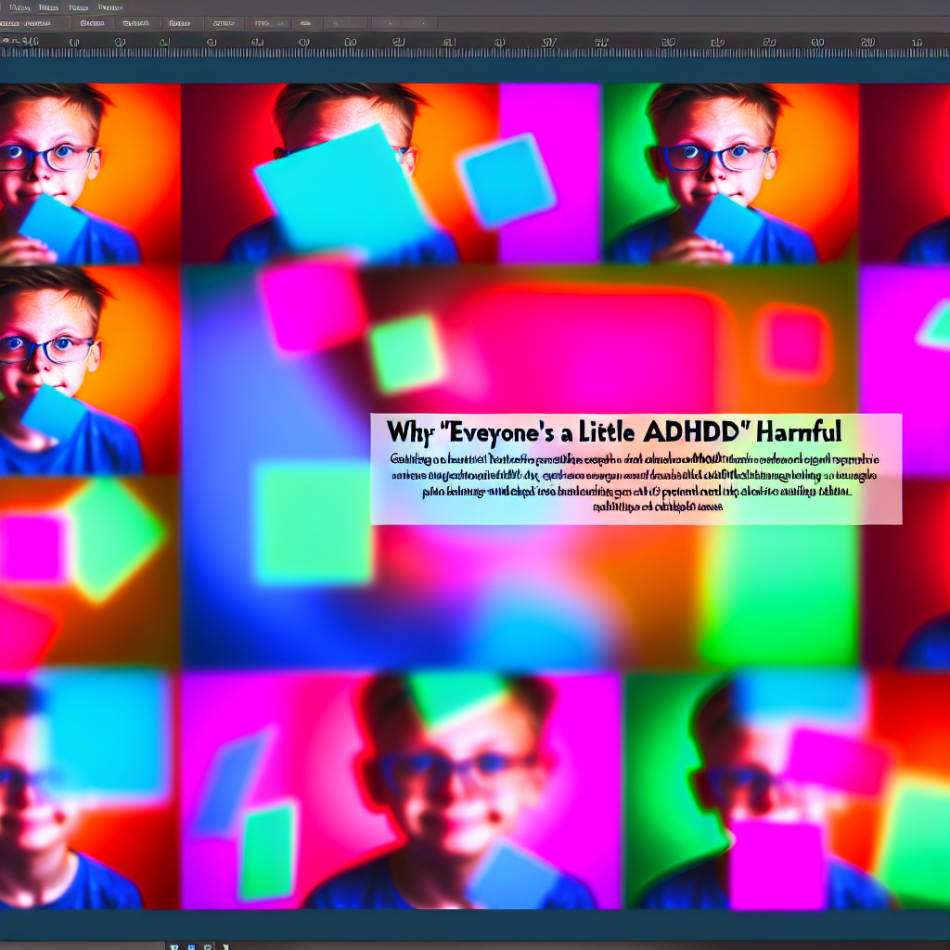Why “Everyone’s a Little ADHD” Isn’t Just Incorrect—It’s Damaging
In recent years, phrases like “Everyone’s a little ADHD these days” have seeped into casual conversation. While often intended as light-hearted, such remarks trivialise a complex neurodevelopmental condition and undermine those who live with it. This article explores why this mindset is harmful, distinguishes ADHD from everyday distractibility, and offers strategies to challenge misconceptions constructively. Understanding these nuances is vital for fostering empathy and accurate awareness.
Understanding ADHD as a Clinical Diagnosis
ADHD (Attention Deficit Hyperactivity Disorder) is a medically recognised neurodevelopmental condition rooted in brain structure and function. Diagnosed using strict criteria from the DSM-5 or ICD-11, it manifests in three subtypes: inattentive, hyperactive-impulsive, and combined. Symptoms must persist for at least six months, significantly impair daily functioning, and appear before age 12. Unlike fleeting distractibility, ADHD involves chronic challenges with executive functioning, emotional regulation, and impulse control that disrupt work, relationships, and self-esteem.
Why the Phrase Is More Than Just Wrong
Dismissing ADHD as universal behaviour minimises the lived experiences of those diagnosed. Imagine equating occasional sadness to clinical depression—it’s reductive and offensive. For individuals with ADHD, daily tasks like prioritising responsibilities or managing time can feel insurmountable. Comments like “We’re all a bit ADHD” imply their struggles are ordinary, invalidating years of frustration, missed opportunities, and societal stigma. This erasure can deter people from seeking diagnosis or accommodations, fearing they won’t be taken seriously.
ADHD Traits vs. Everyday Distractibility: Key Differences
While everyone experiences occasional forgetfulness or restlessness, ADHD symptoms are persistent, pervasive, and disproportionate. Consider these distinctions:
- Consistency: Losing keys once isn’t ADHD. Chronically misplacing essentials, despite systems to prevent it, might be.
- Impact: Daydreaming during a meeting is typical. Inability to focus during critical tasks, even with consequences, signals ADHD.
- Emotional Toll: ADHD often coexists with anxiety, depression, or rejection-sensitive dysphoria, compounding daily challenges.
These differences highlight why conflating traits with a disorder is misleading and harmful.
Responding with Empathy and Facts
When confronted with the “Everyone’s a little ADHD” myth, respond thoughtfully rather than confrontationally. Start by acknowledging the speaker’s intent (“I know you don’t mean harm, but…”), then clarify misconceptions. For example:
- “ADHD isn’t just about focus—it affects how the brain manages time, emotions, and motivation. It’s like expecting someone with a broken leg to ‘just walk faster.’”
- “Imagine if your brain had 10 tabs open at once, but you couldn’t close any. That’s ADHD every day.”
Sharing analogies or personal stories (if comfortable) can humanise the condition and dispel myths.
The Role of Education in Shifting Perspectives
Combating stereotypes requires systemic change. Schools and workplaces should provide ADHD awareness training to reduce stigma and promote inclusivity. Media representation matters, too—accurate portrayals in shows or articles help normalise neurodiversity without romanticising or pathologising it. Encourage sceptics to explore reputable sources like the NHS, ADHD UK, or peer-reviewed studies. Small actions, like correcting casual misuse of “ADHD” as a synonym for “busy,” collectively reshape public understanding.
Conclusion: Moving Beyond Oversimplification
Dismissive statements about ADHD stem from ignorance, not malice—but they perpetuate harm nonetheless. Recognising ADHD as a legitimate disability, not a quirk, validates those navigating its challenges and fosters a culture of support. By responding with empathy, educating others, and advocating for accurate representation, we can replace oversimplified narratives with nuance. Next time someone says, “We’re all a little ADHD,” see it as an opportunity to enlighten, not admonish. Together, we can shift the conversation from misconception to understanding.
